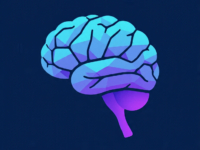
The Rise of Generative AI: Hype or Reality?
Remember the first time you saw an AI generate a coherent paragraph, a stunning image, or even a piece of music from a simple text prompt? For many, it felt like magic, a glimpse into a sci-fi future suddenly made real. The past few years have seen an explosion in the capabilities and public awareness of Generative AI, leading to a whirlwind of excitement, investment, and intense debate. From everyday content creation to complex scientific research, Generative AI is undeniably shaking up industries and redefining what’s possible with artificial intelligence.
But with all the buzz, a crucial question emerges: Is this all just hype, or are we witnessing a truly revolutionary technology that will fundamentally change our world? This article will delve into the burgeoning world of Generative AI, separating the genuine breakthroughs from the speculative exaggerations and exploring its tangible impact on our lives and work.
Background and Context: From Rules to Creativity
For decades, Artificial Intelligence primarily focused on analytical tasks – processing existing data to recognize patterns, make predictions, or classify information. Think of traditional AI in areas like:
- Rule-based systems: Following pre-programmed rules (e.g., if-then statements).
- Machine Learning (ML): Learning from data to make predictions or decisions (e.g., spam filters, recommendation engines).
- Deep Learning (DL): A subset of ML using neural networks to uncover complex patterns (e.g., image recognition, natural language understanding).
While impressive, these AIs typically operated within defined boundaries. They didn’t create new, original content. This changed dramatically with the rise of Generative AI.
Generative AI refers to a class of AI models capable of producing novel outputs, such as text, images, audio, video, code, and even 3D models, that are similar in style and content to the data they were trained on, yet are entirely new creations. Key architectural breakthroughs, particularly the development of Transformers (which power Large Language Models or LLMs) and Generative Adversarial Networks (GANs), enabled this leap. These models learned the underlying patterns and structures of vast datasets, allowing them to generate rather than just analyze. The public launch of models like OpenAI’s ChatGPT and DALL-E 2, Google’s Gemini, and Midjourney brought this technology into the mainstream consciousness, demonstrating its astonishing creative potential.
Key Features and Benefits of Generative AI
The transformative power of Generative AI lies in its unique capabilities:
1. Rapid Content Generation
One of the most immediate and impactful benefits is the ability to generate various forms of content at unprecedented speed and scale.
- Text: Drafting articles, marketing copy, emails, scripts, summaries, and even complex legal documents.
- Images & Art: Creating realistic photos, abstract art, product designs, and illustrations from text descriptions or existing images.
- Code: Generating code snippets, debugging, translating between programming languages, and assisting developers.
- Audio & Video: Producing realistic voiceovers, musical compositions, and even full video clips.
2. Enhanced Creativity and Ideation
Generative AI acts as a powerful creative partner, helping humans brainstorm, iterate, and push artistic boundaries. It can:
- Break Creative Blocks: Provide endless variations and suggestions to spark new ideas.
- Rapid Prototyping: Quickly generate multiple design options for products, websites, or marketing campaigns.
- Explore Novel Concepts: Produce outputs that human creators might not have conceived, leading to new artistic styles and solutions.
3. Personalization and Customization
The ability to generate tailored content opens up new avenues for personalization:
- Personalized Marketing: Creating unique ad copy, visuals, and recommendations for individual consumers.
- Adaptive Learning: Generating customized educational materials and exercises based on a student’s progress and learning style.
- Customer Service: Powering highly sophisticated chatbots and virtual assistants that can provide nuanced, context-aware responses.
4. Automation of Repetitive Tasks
Generative AI can automate tasks that previously required human cognitive effort:
- Data Synthesis: Creating synthetic datasets for training other AI models, protecting privacy, or augmenting limited real-world data.
- Report Generation: Automating the drafting of financial reports, market analyses, or research summaries.
- Workflow Optimization: Streamlining complex processes in fields like legal, HR, and finance by automating document creation and revision.
Detailed Comparison: Traditional AI vs. Generative AI
To truly understand the “rise” of Generative AI, it’s helpful to compare its core approach with traditional AI:
| Feature/Area | Traditional AI (Discriminative AI) | Generative AI |
| Core Function | Classifies, predicts, identifies patterns in existing data. | Creates new, original data from learned patterns. |
| Primary Task | “What is this?” “Is this A or B?” “What’s the forecast?” | “Create something like this.” “What if…?” “Generate X.” |
| Output Type | Labels, scores, predictions, classifications. | Text, images, audio, video, code, 3D models. |
| Example Use | Spam detection, facial recognition, credit scoring. | Writing an essay, designing a logo, composing music. |
| Creativity | Low to None (predictive, not creative). | High (produces novel outputs). |
| Complexity | Often simpler models for specific tasks. | Typically larger, more complex models (e.g., LLMs). |
Pros and Cons of Generative AI
The rapid ascent of Generative AI brings with it a complex interplay of advantages and disadvantages.
Pros:
- Massive Productivity Gains: Automates content creation, accelerates research, and streamlines workflows across industries.
- Unlocks New Creative Possibilities: Empowers individuals and businesses to create content and designs that were previously too costly or time-consuming.
- Democratizes Creation: Lowers the barrier to entry for content creation, allowing more people to generate high-quality media.
- Innovation Catalyst: Speeds up R&D in fields like drug discovery, material science, and engineering through rapid prototyping and simulation.
- Personalization at Scale: Delivers highly customized experiences to users in various applications.
- Economic Opportunities: Creates new jobs (e.g., prompt engineers, AI ethicists) and new business models.
Cons:
- Misinformation and Deepfakes: The ease of generating realistic fake content (text, images, video) poses significant risks for spreading disinformation, fraud, and societal manipulation.
- Algorithmic Bias: Generative models can inherit and amplify biases present in their training data, leading to unfair or discriminatory outputs.
- Intellectual Property and Copyright Issues: Questions arise regarding the ownership of AI-generated content and whether AI models infringe on copyrighted material used in their training.
- Job Displacement: Automation of creative and knowledge-based tasks may lead to significant job displacement in certain sectors.
- Hallucinations: Generative AIs can produce factually incorrect or nonsensical information, presenting it as truth.
- Environmental Impact: Training and running large generative AI models require substantial computational power and energy, contributing to carbon emissions.
- Security Risks: Malicious actors can use generative AI for sophisticated phishing attacks, malware generation, and other cybercrimes.
- Lack of Explainability and Control: Understanding why a generative model produces a specific output can be challenging, raising concerns about accountability and trust.
Use Cases / Who Should Use It
The applications of Generative AI are incredibly diverse and continue to expand. Almost any industry that deals with information, design, or content can benefit:
- Marketing and Advertising: Generating ad copy, social media posts, visual assets, and personalized campaign content.
- Content Creation (Media, Publishing, Entertainment): Drafting articles, scripts, storyboards, concept art, background music, and video snippets.
- Software Development: Writing code, automating testing, debugging, and generating documentation.
- Healthcare and Life Sciences: Designing new drug molecules, generating synthetic patient data for research, assisting with medical reports.
- Product Design and Manufacturing: Rapidly prototyping new product designs, optimizing materials, and simulating performance.
- Education: Creating personalized learning materials, generating quizzes, and assisting with research summaries.
- Customer Service: Powering advanced chatbots that can handle complex queries and offer tailored solutions.
- Architecture and Engineering: Generating design variations, simulating structural performance, and visualizing concepts.
- Gaming: Creating realistic game environments, characters, and storylines.
- Individual Users: For creative pursuits, brainstorming, summarizing information, and personal productivity.
FAQs about Generative AI
Q1: Is Generative AI really intelligent, or just a sophisticated pattern matcher?
Generative AI excels at pattern matching and recreating those patterns in novel ways. While it can produce outputs that appear intelligent or creative, the debate continues on whether it possesses true “understanding” or consciousness. Most experts agree it operates based on statistical relationships learned from data, not genuine sentience.
Q2: How can we tell if content is generated by AI?
It’s becoming increasingly difficult to distinguish AI-generated content from human-created content, especially with text. However, “AI detectors” are emerging, focusing on statistical anomalies and specific patterns of AI generation. Watermarking generated content or requiring disclosure of AI usage are also being explored.
Q3: Will Generative AI replace human jobs?
Generative AI will undoubtedly automate many tasks currently performed by humans, particularly those involving content creation, data analysis, and repetitive knowledge work. However, it’s more likely to transform jobs than eliminate them entirely. New roles (e.g., prompt engineer, AI ethicist, AI-assisted content editor) will emerge, and humans will need to adapt by focusing on skills like critical thinking, creativity, and strategic oversight.
Q4: What are “AI hallucinations”?
“Hallucinations” in Generative AI refer to instances where the model generates information that is factually incorrect, nonsensical, or deviates significantly from reality, presenting it as if it were true. This often happens when the model lacks sufficient training data on a particular topic or tries to “fill in the blanks” speculatively.
Q5: Can Generative AI infringe on copyrights?
This is a major legal and ethical challenge. If generative models are trained on copyrighted material without permission, the outputs they create could potentially be considered derivative works, leading to infringement claims. Lawsuits are currently underway to clarify these issues, and regulations are being developed to address intellectual property in the age of AI.
Q6: What are the biggest ethical concerns with Generative AI?
Beyond copyright, key ethical concerns include the spread of misinformation and deepfakes, algorithmic bias leading to unfair or discriminatory outputs, privacy violations due to the vast data used for training, and the environmental impact of large model training. Ensuring transparency, accountability, and fairness in AI development and deployment is paramount.
Conclusion: Reality with Responsibility
The rise of Generative AI is not merely hype; it is a profound technological reality that is already transforming numerous aspects of our digital and creative landscapes. Its ability to create, augment, and automate content generation at scale is genuinely revolutionary, offering unprecedented levels of productivity and unlocking new avenues for innovation.
However, this powerful technology comes with significant responsibilities. The challenges of misinformation, bias, intellectual property, and job displacement are not minor hurdles but critical issues that demand careful consideration, proactive development of ethical guidelines, and robust regulatory frameworks.
Final Verdict: A Powerful Tool, Not a Panacea
Generative AI is best viewed as an incredibly powerful tool, not a magical panacea. It augments human creativity and productivity, automates mundane tasks, and sparks new ideas. It’s a co-pilot for creation, a tireless assistant for research, and a catalyst for innovation. For individuals and organizations, the verdict is clear: embrace Generative AI, experiment with its capabilities, and integrate it strategically. But do so with a keen awareness of its limitations and an unwavering commitment to ethical development and responsible deployment. The future belongs to those who learn to effectively wield this transformative technology, shaping it to serve humanity’s best interests.



















Leave a Reply